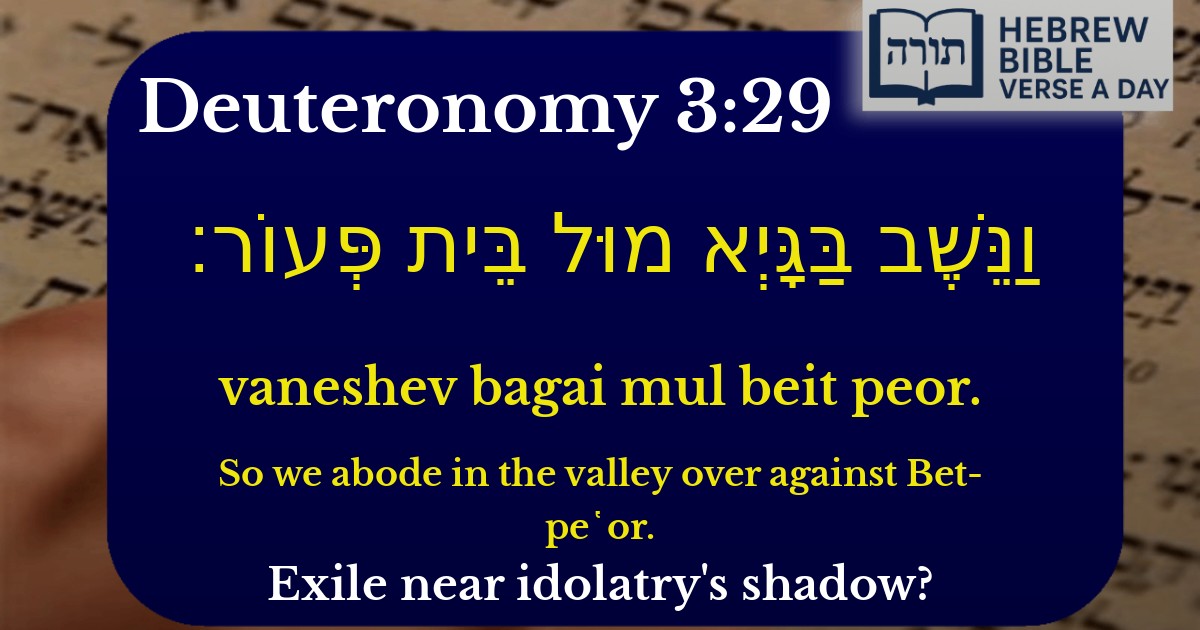Join Our Newsletter To Be Informed When New Videos Are Posted
Join the thousands of fellow Studends who rely on our videos to learn how to read the bible in Hebrew for free!
Hebrew Text
וַנֵּשֶׁב בַּגָּיְא מוּל בֵּית פְּעוֹר׃
English Translation
So we abode in the valley over against Bet-pe῾or.
Transliteration
Vaneshev bagai mul beit peor.
Hebrew Leining Text
וַנֵּ֣שֶׁב בַּגָּ֔יְא מ֖וּל בֵּ֥ית פְּעֽוֹר׃ {פ}
Parasha Commentary
📚 Talmud Citations
This verse is not quoted in the Talmud.


Context in Devarim (Deuteronomy)
The verse (Devarim 3:29) appears in Moshe's recounting of Bnei Yisrael's journey before entering Eretz Yisrael. It describes their encampment near Beit Peor, a place associated with earlier incidents of idolatry (Bamidbar 25:3). Rashi notes that this location is mentioned to contrast Moshe's impending death outside the Land with the people's future entry—highlighting the consequences of the Meraglim's sin.
Significance of the Valley Opposite Beit Peor
Beit Peor was linked to the Moabite deity Peor, where Bnei Yisrael previously stumbled into avodah zarah (Bamidbar 25:1-3). Ramban explains that encamping there served as a reminder of their past failures and the need for vigilance against spiritual pitfalls. The valley's location—opposite Beit Peor—symbolizes a stance of opposition to idolatry.
Midrashic Insights
Halachic and Ethical Lessons
The Rambam (Hilchot Avodah Zarah 7:1) derives from such verses the importance of distancing oneself from environments that may lead to sin. The valley's positioning—"opposite" Beit Peor—teaches the principle of creating boundaries (seyag) against negative influences, a concept echoed in Mishnah Avot 1:7.